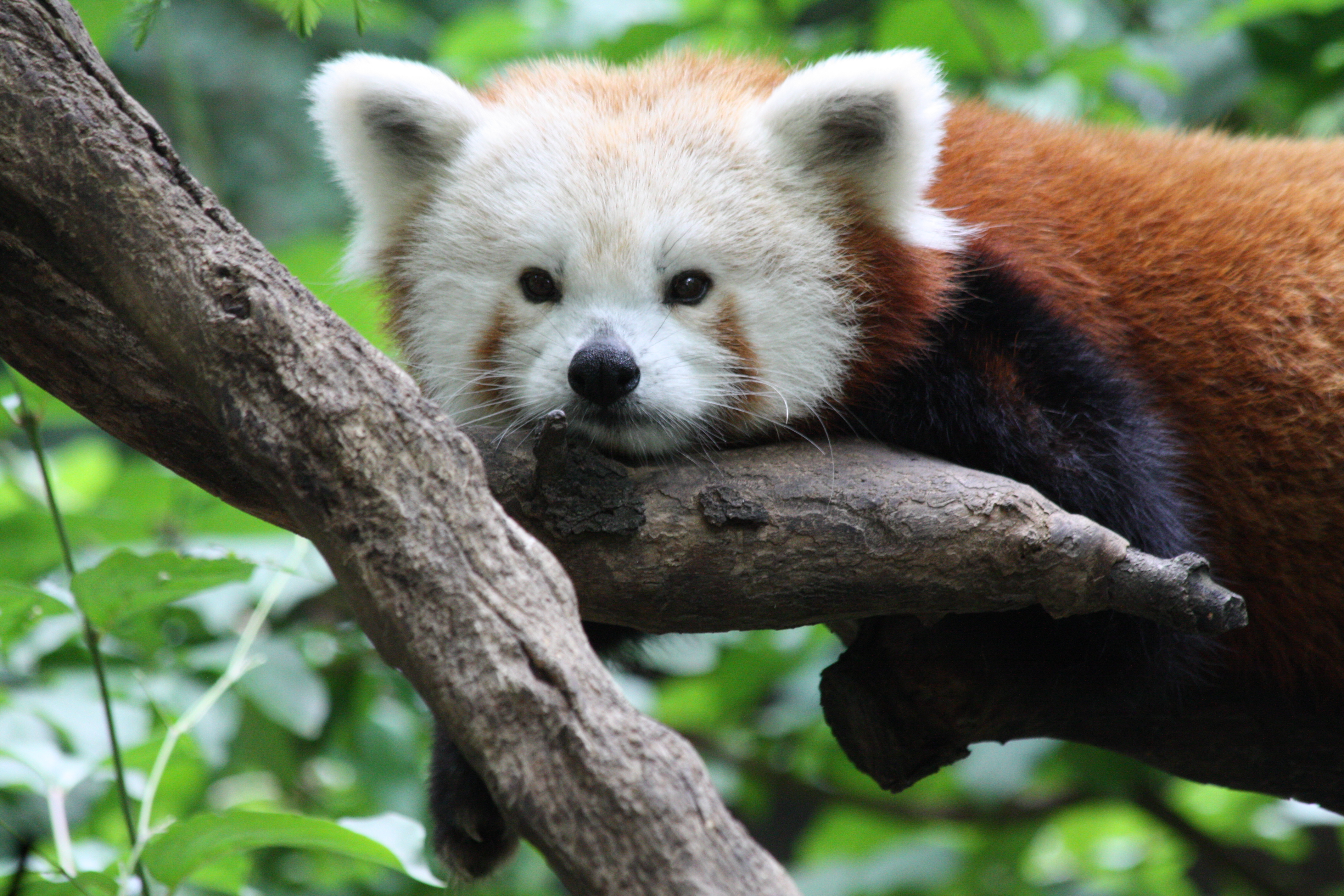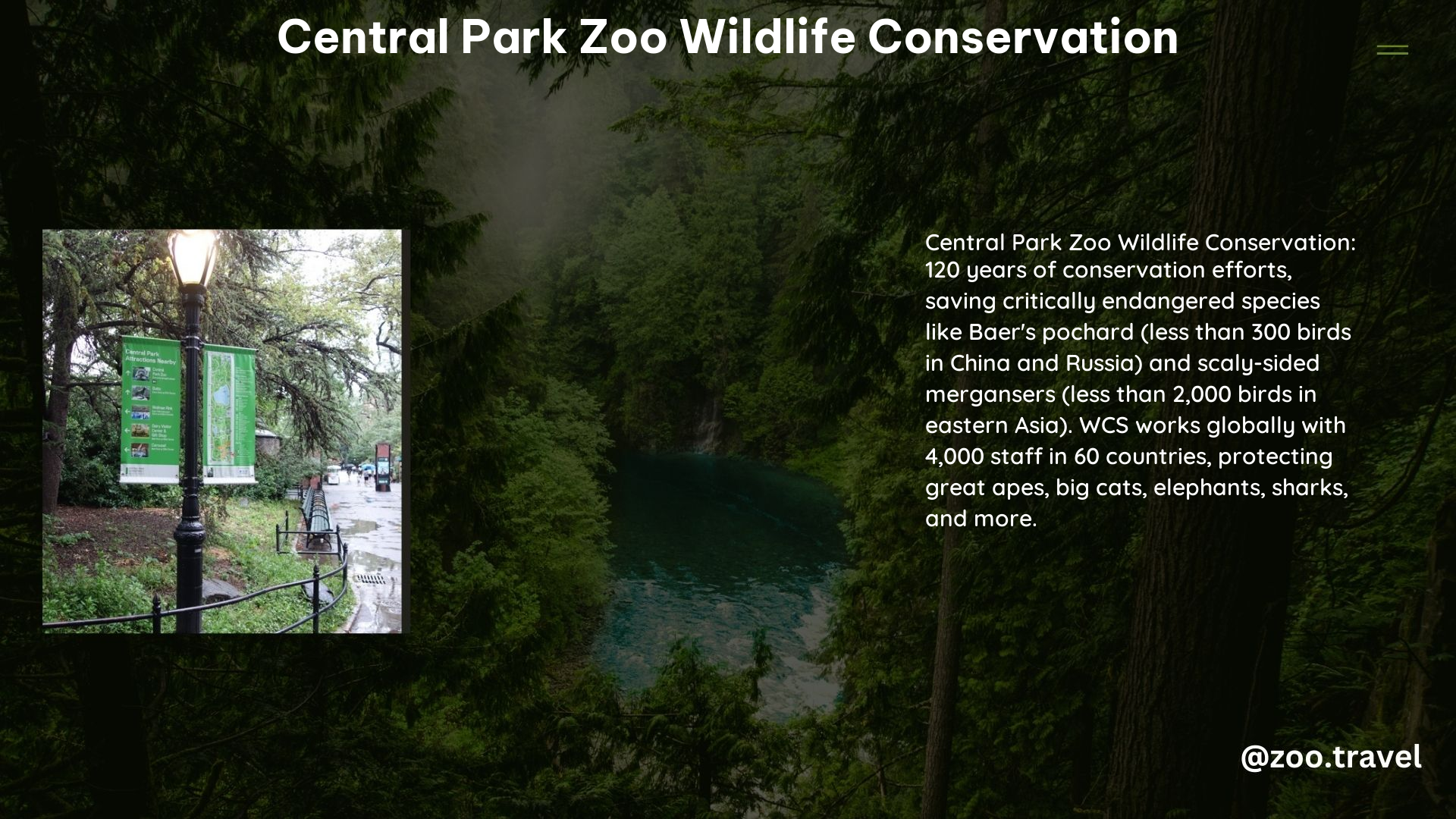The Central Park Zoo in New York City is a renowned institution that not only provides a captivating experience for visitors but also plays a crucial role in wildlife conservation efforts. As part of the Wildlife Conservation Society (WCS), the zoo is dedicated to protecting endangered species and promoting environmental awareness.
Endangered Species Conservation

The Central Park Zoo is actively involved in the conservation of various endangered species, both locally and globally. Some of the key species the zoo focuses on include:
-
Scaly-sided Merganser: This critically endangered waterfowl species is a primary focus of the zoo’s conservation efforts. The zoo collaborates with international partners to study and protect this elusive bird, which is threatened by habitat loss and hunting.
-
Baer’s Pochard: Another critically endangered waterfowl species, the Baer’s pochard, is a target of the zoo’s conservation programs. The zoo works to maintain healthy populations of this rare bird in captivity and supports field research to understand its declining numbers in the wild.
-
Superb Bird-of-Paradise: The zoo has successfully bred this stunning tropical bird, which is at risk due to habitat loss and hunting. The zoo’s breeding program helps to ensure the survival of this species and contributes to global conservation efforts.
Breeding Programs

The Central Park Zoo’s breeding programs play a crucial role in the conservation of endangered species. By maintaining healthy populations of these animals in captivity, the zoo can help to ensure their long-term survival and support reintroduction efforts in the wild.
One of the zoo’s notable breeding successes is the superb bird-of-paradise. This species is known for its elaborate mating displays and is threatened by habitat loss and hunting. The zoo’s breeding program has helped to maintain a stable population of this bird, and the zoo has shared its expertise with other institutions to further the conservation of this species.
Community Engagement and Education
The Central Park Zoo recognizes the importance of engaging the local community in its conservation efforts. The zoo offers a variety of educational programs and activities that aim to raise awareness and inspire action among visitors, particularly children.
Educational Programs
- School Field Trips: The zoo welcomes school groups, providing interactive educational experiences that teach students about the importance of wildlife conservation.
- Summer Camps: The zoo offers summer camp programs that immerse children in hands-on learning about animal habitats, behavior, and conservation.
- Guided Tours: Visitors can join guided tours led by knowledgeable zoo staff, who share insights into the zoo’s conservation work and the challenges facing wildlife.
Volunteer Opportunities
The Central Park Zoo also provides opportunities for community members to get involved in its conservation efforts through volunteer programs. Volunteers can assist with various tasks, such as:
- Animal Care: Helping with the daily care and feeding of the zoo’s animals.
- Habitat Maintenance: Participating in the upkeep and enhancement of the zoo’s animal habitats.
- Educational Outreach: Supporting the delivery of educational programs and activities for visitors.
By engaging the local community, the Central Park Zoo fosters a sense of responsibility and ownership in the conservation of wildlife, inspiring visitors to become active participants in these efforts.
Global Conservation Initiatives
The Central Park Zoo’s conservation efforts extend beyond its local boundaries, as it is part of the larger Wildlife Conservation Society (WCS) network. The WCS operates in nearly 60 countries worldwide, working to protect a wide range of ecosystems and the species that inhabit them.
Collaborative Efforts
The Central Park Zoo collaborates with other zoos, research institutions, and conservation organizations to share knowledge, best practices, and resources. This collaborative approach allows the zoo to contribute to global conservation initiatives and learn from the experiences of its partners.
Field Research and Expertise
The WCS, which manages the Central Park Zoo, employs a team of field and zoo experts who work together to advance conservation science and inform on-the-ground efforts. The zoo’s staff contribute their expertise to research projects and conservation programs in various parts of the world, helping to address the unique challenges faced by different species and ecosystems.
Conclusion
The Central Park Zoo’s commitment to wildlife conservation is evident in its multifaceted approach, which includes species-specific conservation efforts, breeding programs, community engagement, and global collaborations. By leveraging its resources, expertise, and partnerships, the zoo plays a vital role in the ongoing struggle to protect endangered species and their habitats, both locally and globally.
